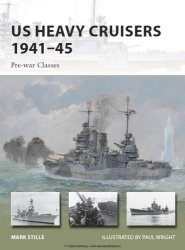The Marshall Plan, or the European Recovery Program, was an American assistance package designed to rebuild the devastated countries of Western Europe following World War II.
Although initiated in part by humanitarian concerns, the Marshall Plan constituted an indispensable element of American strategy in the political, economic, and ideological struggle known as the cold WAR. In particular, American policymakers feared that economic instability on the European continent would invite both economic depression and communist subversion. They also worried that stagnant European demand would threaten the economic boom in the United States that had begun with American entry in the war and had been sustained by continued international demand.
At the end of World War II, Europe lay in shambles. The major powers had exhausted themselves: Great Britain and France were still reeling, Italy, Greece, and Turkey bordered on chaos, and Germany lay in ruins. Europe also faced a severe manpower shortage: over 35 million people had died during the war. Hordes of displaced persons, buffeted by the ravages of war, wandered about the continent. Fearful that such economic dislocation invited communist influence, the administration of Harry S. Truman sought to rebuild Western Europe.
Secretary of State George C. Marshall first publicly enunciated the European Recovery Program on June 5, 1947, in a speech at Harvard University. Marshall called upon the nations of Europe to unite and tackle European reconstruction in a comprehensive and collective fashion. Initially included in this call were the nations of both Western and Eastern Europe. Marshall told the nations of Europe that if they could devise a comprehensive plan of reconstruction, the United States would fund it.
At a summer meeting in Paris, representatives from Great Britain, France, and the Soviet Union met to hammer out details of the proposal. Wary of capitalist penetration into Eastern Europe, the Soviet foreign minister Vyacheslav Molotov argued against any collective action, preferring instead a flexible plan able to address the needs of specific countries. Knowing that the United States desired collective action, the British and French foreign ministers squashed Molotov’s initiatives, prompting his departure. Although the United States had offered aid to the Soviet Union, American policymakers believed that the Russians would never accept it on American terms, knowing that American assistance would undermine Soviet control in Eastern Europe. Moscow’s rejection helped the Economic Cooperation Act pass Congress easily in March 1948—69 to 17 in the Senate and 329 to 74 in the House.
From April 1948 to December 1951, almost 13 billion American dollars flowed into Western Europe under the direction of the Economic Cooperation Administration. In all, 16 countries participated in the program: Austria, Belgium, Denmark, France, Greece, Iceland, Ireland, Italy, Luxembourg, the Netherlands, Norway, Portugal, Sweden, Switzerland, Turkey, the United Kingdom, and western Germany. The greatest funding went to Great Britain, France, Italy, and West Germany. Direct grants accounted for the bulk of this aid. The money was used to restore industrial and agricultural production, establish financial stability, and expand trade. Seventy percent of the aid was spent on goods from the United States, thereby ensuring the continued international demand for American products. While some Europeans feared that the Marshall Plan served as an instrument for perpetual American dominance, most Europeans recognized that the assistance helped revive Western Europe.
Americans, for the most part, viewed the Marshall Plan as a runaway success. The European Recovery Program became a model for other U. S. initiatives designed to bolster countries and regions against communist influence. Truman declared as much with his Point Four speech in 1949, in which he exhorted Americans to embark on a bold new program to provide technical assistance to third world countries.
Further reading: Michael J. Hogan, The Marshall Plan: America, Britain, and the Reconstruction of Western Europe, 1947-1952 (Cambridge: Cambridge University Press, 1987).
—Brian Etheridge massive resistance See White Citizens’ Councils.
McCarran Act See Internal Security Act (1950).




 World History
World History









